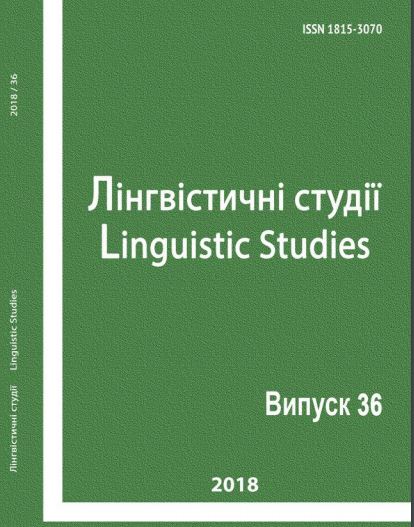The Principles of Linguistic Constructing Emotions in Discourse.
DOI:
https://doi.org/10.31558/1815-3070.2018.36.8Keywords:
a communicative situation, constructing, discourse, an emotion, a reference situationAbstract
Еmerge from a contextual analysis, a discourse analysis and a content analysis (Textanz software, Concordance option) of 17 electronic editions of written English media discourse of different genres for the period of 2006-2017. Findings encompass nine socio-cultural features of constructing distress as a feeling of extreme unhappiness: ‘family’, ‘death’, ‘life’, ‘freedom’, ‘justice’, ‘support’, ‘hope’, ‘truth’, ‘time’. The analyses elicited the following reference situations which frame the embodied emotion socially and culturally: ‘Loss’, ‘Maternal and childbirth separation’, ‘Frustration’, ‘Illness, disorder, or injury’, ‘Difficult situation’, ‘Physical violence’, ‘Moral violence’, ‘Dangerous situation’.References
Bamberg, Michael. “Language, Concepts and Emotions: the Role of Language in the Construction of Emotions.” Language Sciences 19, No. 4 (1997): 309-340. Print.
Barrett, Lisa Feldman. How Emotions are Made. The Secret Life of the Brain. Boston, New York: Houghton Mifflin Harcout, 2017. Print.
Danylian, Oleh, Dzioban, Oleksandr, Maksymov, Serhii, et. al. Filosofia Prava (The Philosophy of Law). Kharkiv: Pravo, 2009. Print.
Dijk, Teun A. van. Society and Discourse. How Social Contexts Influence Text and Talk. Cambridge University Press: Cambridge, 2009. Print.
Harre, Rom, and W. Gerrod Parrot. The Emotions: Social, Cultural and Biological Dimensions. London: Sage Publications, 1999. Print.
Izard, Carroll Ellis. The Psychology of Emotions. New York: Plenum, 1991. Print.
Lewis, Michael, and Carolyn Saarni. “Culture of emotions.” The Socialisation of Emotions. NY/London (1985): 1-20. Print.
Makarov, Mikhail. Osnovy Teorii Diskursa (The Basics of Discourse Theory). Moscow: Gnozis, 2003. Print.
Morozova, Olena. “Interakziinyi Freim jak Struktura Komunikatyvno Relevantnoho Znannia: Teoretychnyi ta Innovaziinyi Aspekty (The Interaction Frame as a Structure of Communicatively Relevant Knowledge: Theoretical and Didactic Aspects)”. Suchasni fundamentalni teorii ta innovatsiini praktyky navchannia inozemnoi movy u vuzi (Modern Fundamental Theories and Innovative Practices of Teaching Foreign Language in HEI). Kharkiv, 2013. 177-190. Print.
Prykhodko, Anatoli. Konzepty i Konzeptosistiemy (Concepts and Conceptosystems). Dnipropetrovsk, 2013. Print.
Semeniuk, Oleh and Valentyna Parashchuk. Osnovy Teorii Movnoi Komunikazii (The Basics of the Communication Theory). Kyiv: VZ “Akademia”. 2010. Print.
Tomkins, Silvan Solomon. Affect Imagery Consciousness. USA: Springer Publishing Company. 1963. Print.
Verbytska, Anna. “Konzept DYSTRES/DISTRESS v anhlomovnomu media dyskursi: kohnityvnokomunikatyvnyi aspekt (The Concept DISTRESS in English Media Discourse: Cognitive and Communicative Aspects)”. Diss. V.N. Karazin Kharkiv National University, 2018. Abstract. Print.


